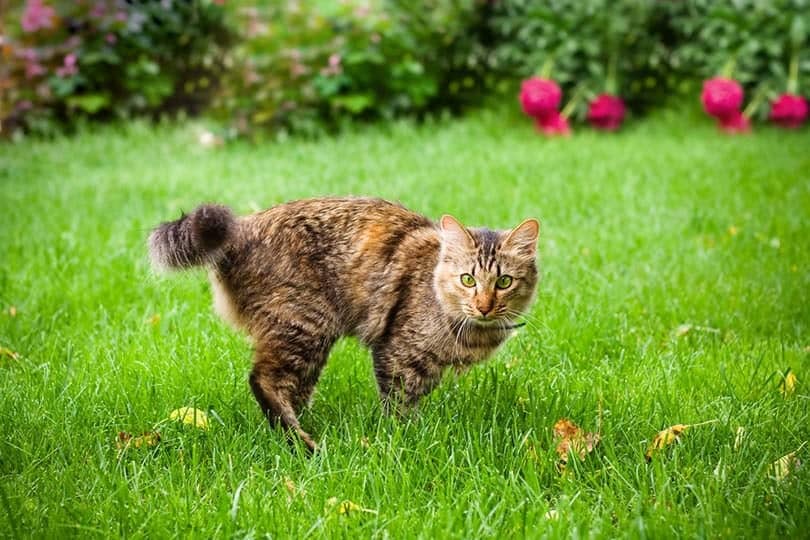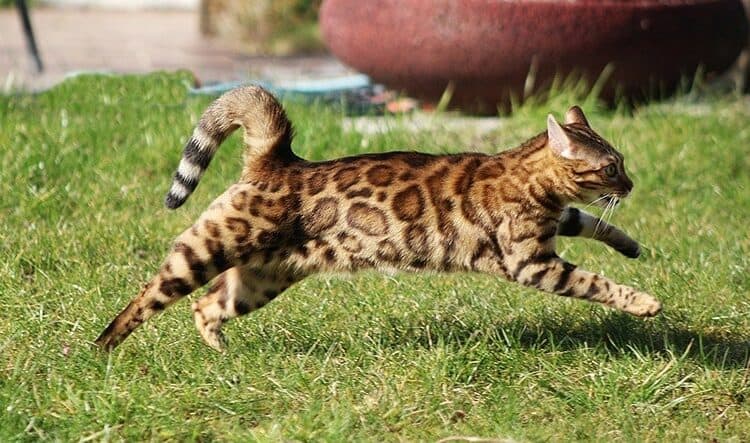Domestic cats can outrun the fastest human alive. Indeed, in 2011, Olympic gold medalist Usain Bolt dazzled the world when he ran the 100 meters in 9.58 seconds, with a top speed of 27 miles per hour (mph). However, this feat, still unmatched among humans, remains slightly below the maximum speed of a house cat, which is 30 mph. However, cats can only maintain this speed for a short distance, usually between 50 and 100 meters.
Let’s look at the reasons behind the speed and agility of our beloved little felines.
What Makes Cats So Fast?
Cats have several anatomical and physiological adaptations that make them swift over short distances:
They are digitigrade animals.
A digitigrade is an animal that walks by leaning on its phalanges (i.e., its fingers or toes) and does not touch the ground with its heels, unlike plantigrades. This enables them to move faster on the ground. In addition, the metacarpals of these animals are much higher than those of plantigrades, which gives them a more fluid gait.
Dogs, rodents, elephants, and walking birds are all digitigrade animals, while humans are plantigrade.
Although these anatomical characteristics enable cats to beat humans in a 100-meter sprint, the latter fare better over long distances. Walking with the soles of the feet provides better support over long distances, making continuous movement easier.
They change their gait when they run.
Everyone is familiar with cats’ graceful gait and their almost supernatural sense of balance. But what you might not know is that their gait changes as they pick up speed. Normally, felines walk like supermodels on a catwalk: They keep their legs in a straight line and move their paws from side to side. This is called “four-beat gait, or symmetric walk.“
But when cats need to chase prey or escape enemies, they use the gallop. This asymmetrical four-beat gait has several variations depending on the speed needed. Thus, at a slow pace, the cat always keeps at least one paw on the ground or up to three during certain phases. But at high speed, the cat becomes almost suspended in the air: About 80% of a stride is passed without contact with the ground, which limits friction and enables them to increase their speed.
However, since faster speeds require more energy to maintain the suspension phase, cats are rarely able to sustain such speeds over extended distances.

They have an extremely flexible spine.
The spine of cats is exceptionally flexible due to the way that the vertebrae are connected and the elastic cushioning disks between them. This gives them flexibility and elegance but also helps increase their speed during a frantic race. Indeed, to reach their top speed of 30 mph, cats must alternately lengthen and flex their backs. To do this, their spine must stretch to its maximum length, enabling the cat to propel themselves about three times their body length with each stride.
Finally, the feline shoulder blade is considered mobile because it is attached to the rest of the body by muscles and not by bones. This gives the shoulder blade enormous freedom of movement as the cat moves, extending their stride even further.
Wrapping Up
Even though cats can’t sustain their 30-mph top speed beyond a short distance, they’re still well-honed little racing machines. Their anatomical and morphological adaptations give them an amazing ability to sprint, which enables them, among other things, to escape predators and hunt small prey.
The least we can say is that cats are fascinating creatures that will never cease to amaze us!
- See Also: Black (Melanistic) Bengal Cat
Featured Image Credit: Pixabay














